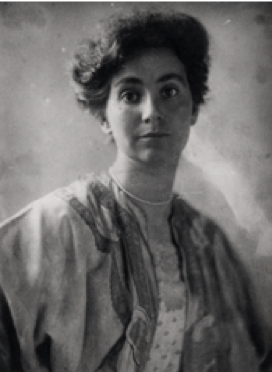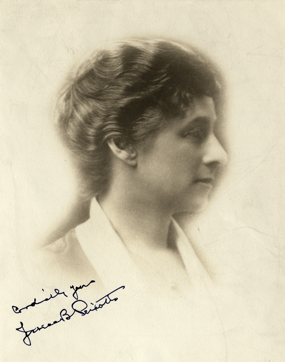Women students’ on-campus experience improved dramatically as a result of their organized activities. In keeping with the assumptions of sexual separation, they set up parallel institutions to those of the men. They requested and received some physical education classes, and were granted the use of the gym for ten hours each week. In 1894 they established the Associated Women Students, their version of the ASUC. The AWS spawned numerous other clubs, sports events, debating societies, and drama and music groups, in addition to academic societies (Park, 1998). By 1901, when the AWS president asked Dr. Ritter to help establish an honor society, which would represent all of the established women’s organizations, there were dozens. That council of women student leaders, which became the Prytaneans (or “council of the chosen ones”), served as an avenue for further organizing and fund-raising for new facilities, like an infirmary and a lunch room. The new President Benjamin Ide Wheeler, who supported student self-government, encouraged this separate, women’s branch of student organizing (Ruyle, 50-54). 1890s activism thus lifted the morale of women students and made changes in their status on campus without challenging the university’s unarticulated assumption that students should be sexually segregated in their extracurricular activities. Moreover, it also reinforced the idea that those activities should often be aimed at self-help fundraising.
Their off-campus lives were also immediately enhanced by their alliance with Mrs. Hearst and Dr. Ritter. In 1900, Hearst gave them a building, Hearst Hall, to use as club house, a gymnasium, and a tea room. She also established the Hearst Domestic Industries to provide part-time employment for the many women who were supporting themselves. She funded a position for Dr. Ritter to serve as “lecturer in hygiene” as well as physician. Together the two women alleviated the students’ housing problem, by establishing a Club House Loan Fund, from which students could borrow to build “cottages” that housed fifteen students and a housemother; by 1910 there were twenty-three such cooperative clubs housing hundreds of women (Ruyle, 5-6; Stadtman, 159-61). Mrs. Hearst’s model of philanthropy, like President Wheeler’s, was also based on the idea of self-help. She funded the loans for building and furnishing housing, which the students were then expected to pay back. Once a loan was paid off, the women students could collectively convert the structure into either a sorority or a cooperative. In response to fears that philanthropy might make students passive recipients of charity, the university and its donors wanted to make sure it was seen as a way of stimulating students to help themselves.
And finally, the allied activism of women also amplified the voices calling for women faculty appointments. Out-going President Martin Kellogg remarked in his annual report of 1898 that “Since the coming of Mrs. Hearst on the Board of Regents, the question has often been asked, why not allow women a representation of the Faculty” (quoted in Gordon, 58-9). Early in the presidency of Wheeler (1899-1919), Dr. Ritter left her position as examining physician, and the students thus lost an important spokesperson. At that point, Phoebe Hearst and the Association of Collegiate Alumnae began to lobby more energetically for a replacement for Ritter and for other women faculty, insisting that such a large portion of the students should not be “without a voting member of the faculty to represent them.” (quoted in Gordon, 62).
The first two women faculty were appointed in response to these efforts. Jessica Peixotto (Ph.D. 1900) was made instructor of political economy in the Economics Department1904 and became a full professor in 1918. Lucy Sprague, a graduate of Radcliffe, was appointed Dean of Women in 1906 and given a courtesy lectureship in English, later converted to an Assistant Professorship, just before she left the university in 1912. Sprague later reported that they did not attend faculty meetings in their departments because “it would have prejudiced the men against us, and we already had enough prejudice to live down” (q. G, p.62). These women were thus apparently not yet full “voting” members of the faculty, but their appointments nevertheless set important precedents: the Regents’ ban on women faculty was broken.
Lucy Sprague

Lucy Sprague had a degree from Radcliffe and had been a secretary there before President Wheeler appointed her Berkeley’s first Dean of Women. The 25-year-old Sprague asked for a faculty appointment to give her position greater weight, but she devoted herself to increasing the sense of unity among women students, raising their morale, enriching their academic and extra-curricular opportunities, and persuading them to look beyond school teaching to a broader array of career options. She had a charismatic personality and succeeded in raising the hopes and expectations of the students (Gordon, 63-7).
Jessica Peixotto

